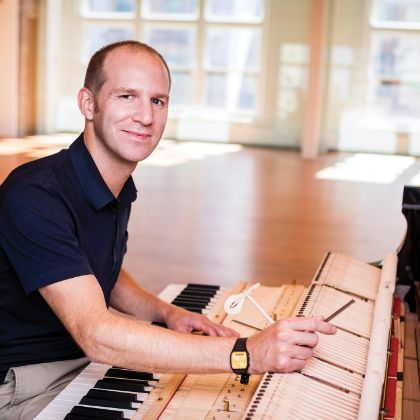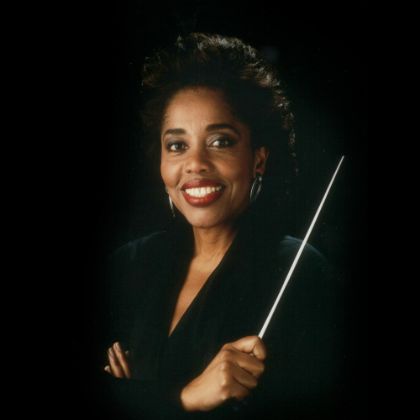Conrad Tao
Photo: Brantley Guterrez
Listen Magazine Feature
Juxtaposition
Conrad Tao On Curating and Composing
By Brian Wise
Plenty of pianists with mainstream credentials moonlight as composers. Think of Marc-André Hamelin, Stephen Hough or the young Daniil Trifonov, all of whom play their own pieces from time to time. Conrad Tao is harder to compartmentalize.
Of the dozens of concerts Tao gives every year, many feature him playing a major piano concerto by Beethoven, Rachmaninoff or Prokofiev, then stepping backstage as the orchestra essays one of his original works, known for their exuberant rhythms and colorful sonorities. If things go well, Tao will give a solo piano encore by Elliott Carter, David Lang or J.S. Bach.
‘I don’t think about it as an older tradition because that’s not one that I’ve ever known.’
A thoughtful, self-aware twenty-one-year-old, Tao dismisses the idea that he’s reviving a centuries-old composer–pianist tradition. “I don’t think about it as an older tradition because that’s not one that I’ve ever known,” Tao said in an interview at his minimalist Upper Manhattan apartment. “It is maybe less about a tradition than about concert halls being a little more attached to everyday reality.”
Tao believes that audiences who are resistant to contemporary music — and that counts for a sizable share of concertgoers — might be more receptive if they first hear him playing familiar repertoire. Hence, concerts like one this past October with the Pittsburgh Symphony, in which he played Gershwin’s Concerto in F followed by Pángŭ, his original piece inspired by the Chinese creation myth.
Tao’s two-for-one approach appears to have particularly resonated with the Dallas Symphony Orchestra, which recently re-engaged Tao as its artist-in-residence, a role he previously held during the 2013–14 season. In November 2013, the orchestra premiered The World Is Very Different Now, Tao’s commemoration of the fiftieth anniversary of President John F. Kennedy’s death. The New York Times called it “an episodic but smooth and mostly attractive series of mood paintings: ominous, tortured, reflective, triumphantly clangorous, resigned.”
Tao’s two solo recordings for Warner Classics, Voyages and Pictures, both take a thematic, old-meets-new approach. With Pictures, released in October, the pianist plays Mussorgsky’s Pictures at an Exhibition along with works by David Lang, Toru Takemitsu, Elliott Carter and Tao himself. The central theme is memory and images.
“It’s really moody,” Tao said of Mussorgsky’s tribute to the artist Viktor Hartmann. “ ‘The Old Castle’ is really tense. Or the ‘Great Gate of Kiev’ to me feels pitched between triumph and despair somehow... like transcendence of mere grief through celebration.” The album also includes A Walk (for Emilio), a gentle, gossamer piece written in memory of Tao’s late teacher, Emilio del Rosario, with whom he studied in his native Illinois between the ages of five and nine.
Much has transpired since Tao’s formative years: moving to New York, studying at the Juilliard School, competition wins and concerto dates with the Philadelphia Orchestra, Detroit Symphony and San Francisco Symphony, all by age sixteen. Does he feel that he’s establishing a career niche?
“I love being able to write,” Tao says. “I don’t know where I fit in, much to the chagrin of my manager. I’m afraid of potentially foreclosing possibilities.”
This article originally appeared in Listen: Life with Music & Culture, Steinway & Sons’ award-winning magazine.
related...
-

A Calming Presence
The curious life of concert technician Joel Bernache.
Read More -

Tania León — ‘Where Are You In This Music?’
The Pulitzer Prize–winning composer and Steinway Artist Tania León speaks to her identity as a global citizen.
Read More -

Mozart In Rosendal
Reportage from Leif Ove Andsnes’s chamber music festival
Read More
By Ben Finane